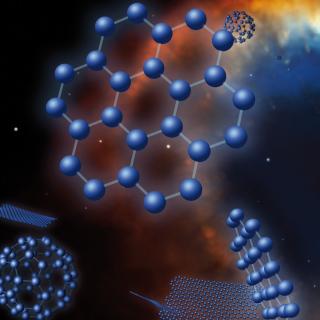Bibcode
Ginolfi, M.; Graziani, L.; Schneider, R.; Marassi, S.; Valiante, R.; Dell'Agli, F.; Ventura, P.; Hunt, L. K.
Bibliographical reference
Monthly Notices of the Royal Astronomical Society, Volume 473, Issue 4, p.4538-4543
Advertised on:
2
2018
Citations
58
Refereed citations
55
Description
Here we investigate the origin of the dust mass (Mdust)
observed in the Milky Way (MW) and of dust scaling relations found in a
sample of local galaxies from the DGS and KINGFISH surveys. To this aim,
we model dust production from Asymptotic Giant Branch (AGB) stars and
supernovae (SNe) in simulated galaxies forming along the assembly of a
MW-like halo in a well-resolved cosmic volume of 4 cMpc using the GAMESH
pipeline. We explore the impact of different sets of metallicity and
mass-dependent AGB and SN dust yields on the predicted Mdust.
Our results show that models accounting for grain destruction by the SN
reverse shock predict a total dust mass in the MW, that is a factor of
∼4 less than observed, and cannot reproduce the observed
galaxy-scale relations between dust and stellar masses, and dust-to-gas
ratios and metallicity, with a smaller discrepancy in galaxies with low
metallicity (12 + log(O/H) < 7.5) and low stellar masses
(Mstar < 107 M⊙). In agreement
with previous studies, we suggest that competing processes in the
interstellar medium must be at play to explain the observed trends. Our
result reinforces this conclusion by showing that it holds independently
of the adopted AGB and SN dust yields.
Related projects

Nucleosynthesis and molecular processes in the late stages of Stellar Evolution
Low- to intermediate-mass (M < 8 solar masses, Ms) stars represent the majority of stars in the Cosmos. They finish their lives on the Asymptotic Giant Branch (AGB) - just before they form planetary nebulae (PNe) - where they experience complex nucleosynthetic and molecular processes. AGB stars are important contributors to the enrichment of the
Domingo Aníbal
García Hernández